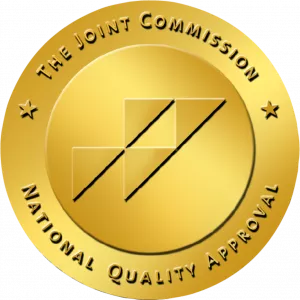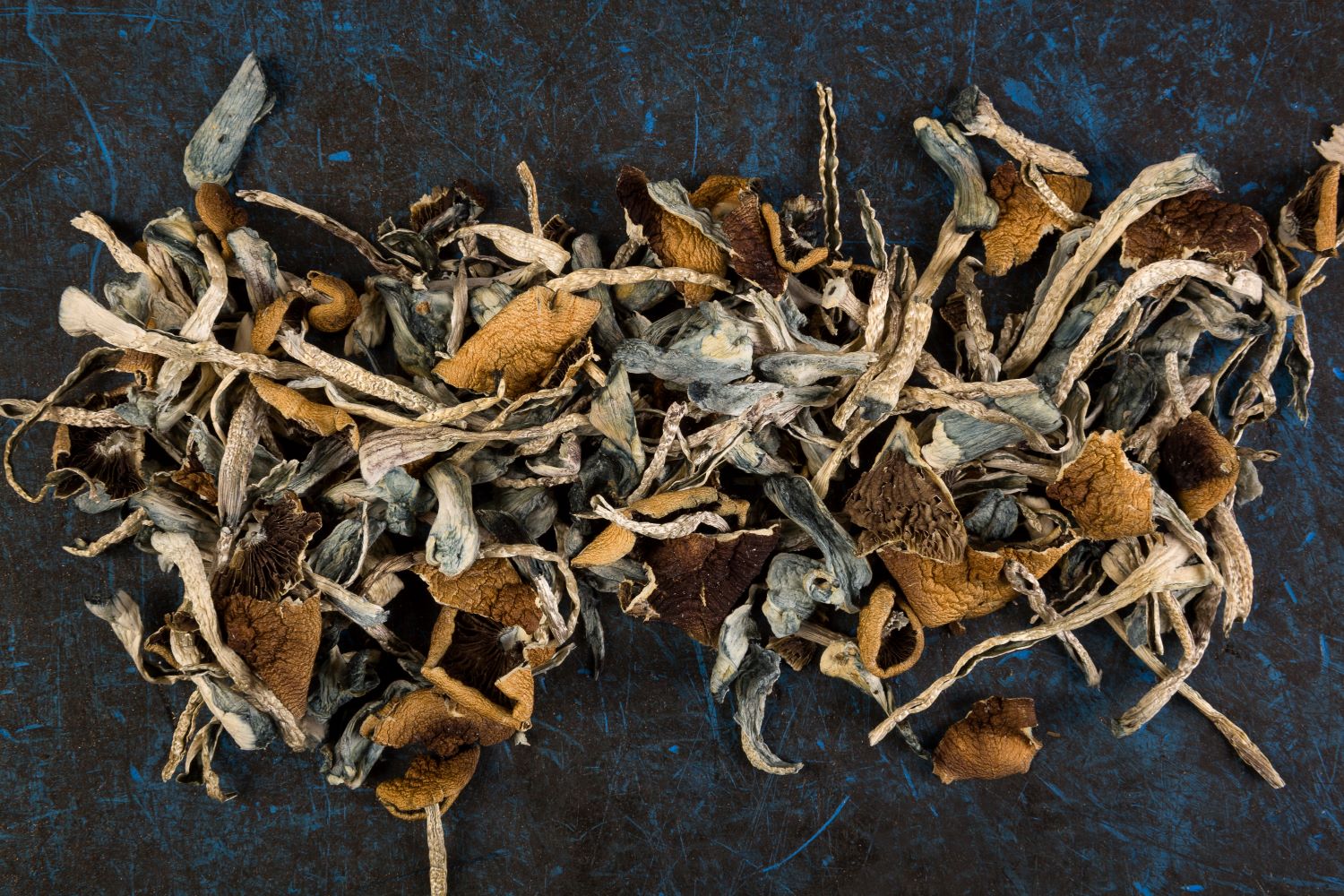Part of the complete guide to understanding addiction
Where Does Psilocybin Therapy Originate?
Psilocybin is a naturally – occurring psychedelic (mind–altering) compound found in over 200 species of wild and cultivated mushrooms. Commonly nicknamed “magic mushrooms”, psilocybe mushrooms look much like ordinary mushrooms with long, slender, whitish-gray stems and dark brown caps with a lighter center. Psilocybin can be eaten plain, mixed/ cooked with other foods, brewed into a tea or drink, swallowed in its pure liquid form, swallowed in a capsule, or even smoked together with tobacco or cannabis. When ingested, its hallucinogenic properties cause users to see, hear, and feel sensations that are not actually present. Additionally, it induces a gentle euphoria and relaxation and has long been sought out by those seeking a “peaceful high”. It’s also become the basis for the popular psilocybin therapy.
When ingested, magic mushrooms are said to induce a sense of deep bliss, unity, decentralization of ego, and oneness with the universe and a higher power. People have reported experiencing profound insights and paradigm shifts concerning their identities and role in this world, as a result of the novel perspective granted to them by this psychedelic experience.
How Does Psilocybin Work in Psilocybin Therapy?
Psilocybin is known scientifically as a “psychedelic tryptamine” and its molecular structure is highly similar to that of the neurotransmitter (feel–good brain chemical) serotonin. Serotonin influences and regulates many vital bodily functions such as:
- Digestion
- Sleep
- Stress tolerance
- Mood
- Imagination
- Learning
- Perception
Because it is so similar to serotonin, psilocybin can activate the body’s sensitive serotonin receptors, which are concentrated most heavily in the prefrontal cortex of the brain. The activation of these receptors causes a certain fluidity and expansiveness in the brain, allowing it to begin forming new (and healthier) connections, perceptions, and neural pathways it was not capable of previously. Much like an astronaut who travels to outer space and can view the Earth as a magnificent whole, it gives one the ability to step back and view a larger picture, seeing things from a fresh and completely altered perspective.
Additionally, research has shown that psilocybin affects a part of the brain known as the “Default Mode Network”, or DMN. The DMN is the brain’s main information storage center and the “interstate highway” that it uses to send information and messages to all its regions and lobes. When ingested, psilocybin temporarily disables one or more of the DMN’s connector hubs – it shuts down large portions of the brain’s information highway. This forces the brain to communicate with portions of itself it has never connected with previously, in ways it has never done before. Many new, healthy neural pathways are created, which can result in long-term positive life changes and marked improvements in mental health.
History of Psilocybin
From the earliest of times, magic mushrooms have been known as the “Plant of the Gods”. They have been used by shamans of the indigenous peoples of Europe and the Mesoamerica for a variety of spiritual, divinatory, and medicinal purposes, as suggested by a variety of murals and rock paintings found in modern-day Spain and Algeria. It was believed that naturally occurring psychedelics such as psilocybin, cannabis, and mescaline are “sacred herbs” and intended to enable people to commune with higher powers and attain exalted spiritual states.
In 1959, Swiss chemist Albert Hoffman succeeded in isolating the active ingredient psilocybin from a species of magic mushrooms known as psilocybe Mexicana. His employer, the pharmaceutical company Sandoz, began marketing and selling this pure psilocybin product to doctors and clinicians as an aid in psychedelic–assisted psychotherapy (PAP). Psilocybin was further researched and tested by Timothy Leary, and associates Ralph Metzner and Richard Alpert, on students at Harvard University in the early 1960s. Additional scientific research and clinical use slowed and then stopped in the late 1960s, due to increasingly restrictive drug laws. In 2000, John Hopkins University received regulatory approval for psychedelic research, and in 2021, it received a federal grant for psychedelic treatment research. Studies are ongoing.
What is Psilocybin-Assisted Therapy?
Since its re-discovery in 1959 – and specifically in recent years – psilocybin has been the subject of much interest for its possible value as a therapy aid. The concept of psychedelic-assisted therapy is not new, and scientists and clinicians are increasingly beginning to believe that psilocybin-assisted therapy may present a highly effective and valuable addition to the world of mental health treatment.
Psilocybin therapy literally means the use of psilocybin – a psychedelic compound native to certain species of mushrooms – in a controlled psychotherapeutic setting. When used in a session, the client is given a carefully determined dose of psilocybin. They then lay on a comfortable bed in a quiet, pleasant room meant to mimic a domestic living room, while wearing an eye mask and listening to a soothing playlist of music designed to help them relax and focus internally. A therapist (and at times, an assisting therapist) is present the entire time to facilitate and guide the psychedelic journey. A session typically lasts between 6 to 8 hours, which is the full duration of a psilocybin experience and how long psilocybin stays in the system.
The psilocybin session (also known as ‘mushroom therapy’) is sometimes preceded by one or two standard sessions intended to build trust and rapport between therapist and client and is always succeeded by a few sessions of talk therapy. The client now works through and processes their entire psychedelic experience – and all resulting insights, memories, and emotions - together with their therapist.
The intention of psilocybin–assisted therapy is to enable clients to overcome emotional obstacles and re-structure unhealthy thought processes in ways that they were previously unable, by merging conventional psychotherapy and novel psychedelic treatment.
Psilocybin Therapy Approval
It is important to note that psilocybin-assisted therapy is still in its infancy, and virtually no conclusive research exists that can determine that it is a safe and effective treatment method. Psychedelic substances are deemed illegal in most countries and most states in America, and any available information has been gleaned from a few randomized, experimental clinical trials. Psilocybin-assisted therapy is not yet legal in most states, and in those where it is, only when used in a supervised and regulated clinical setting.
Who Might Benefit from Psilocybin Therapy?
Based on present data, professionals speculate that psilocybin–assisted therapy may be highly beneficial for individuals who have tried conventional therapy modalities and found no success.
Potential candidates for this therapy would include those suffering from:
- Treatment-resistant depression,
- Traumatic stress disorder
- Anorexia nervosa
- Severe anxiety
- Persisting nicotine or alcohol addiction.
Additionally, studies show that psilocybin therapy may greatly alleviate the emotional distress and psychological pain of those diagnosed with a terminal illness, granting them precious optimism and hope
The novel combination of traditional therapy and psychedelic drugs may enable such individuals to finally break free from unhealthy thought processes, emotions, and behavioral patterns, through utilizing the psychedelic journey as a vehicle for lasting change.
Names and Types of Psilocybin
Psilocybin is found in over 200 species of mushrooms, all colloquially called “magic mushrooms”. These species have many specific names and street terms, including:
- Agaric
- Amani
- Boomers
- Blue Meanies
- God’s Flesh
- Golden Teacher
- Golden Tops
- Hombrecitas
- Laughing Gym
- Las Mujercitas
- Liberties
- Liberty Caps
- Little Smoke
- Mexican Mushrooms
- McKennaii Mushrooms
- Mushies
- Musk
- Philosopher’s Stone
- Psilocybe Azurescens
- Psilocybe Mexicana
- Sacred Mushrooms
- Shrooms
- Silly Putty
- Simple Simon
- Silly Simon
- Wavy Caps
Side Effects and Dangers of Psilocybin
Despite the numerous benefits they might offer, magic mushrooms may also be accompanied by a host of negative side effects. Because it is a hallucinogen, psilocybin greatly amplifies every sensation and causes users to see, hear, and feel things that do not exist in reality. Overdosing on magic mushrooms always carries the risk of a “bad trip” – when one’s sensations are utterly overwhelmed by their environment, resulting in sensory overload, severe discomfort within oneself, a loss of ability to communicate with others, loss of touch with reality, and extreme anxiety to the point of paranoia. In situations where one needs to be focused – such as in a crowded public place, a busy street when driving a car, or operating heavy machinery – a “bad trip” may present a life-threatening situation.
Physical Side Effects of Psilocybin:
- Dilated pupils
- Somnolence (drowsiness)
- Headaches
- Elevated body temperature, blood pressure, and heart rate
- Lack of coordination
- Muscle weakness
- Nausea
Mental Side Effects of Psilocybin:
- Hallucinations
- Euphoria
- Distorted perception of place and time
- Spiritual/ introspective experiences
- Anxiety
- Panic
- Paranoia
- Potential psychosis (in extreme cases)
What is the Legal Status of Psilocybin?
Psilocybin – as with all psychedelics – is currently classified as a Schedule I substance by the DEA, which means it has a high potential for abuse and no legitimate medical purpose. Although this belief is beginning to be contested by clinicians and researchers of psychedelic–assisted therapy, psilocybin remains illegal in 49 out of 50 states. Cultivating, possessing, or distributing magic mushrooms is considered equivalent to drug manufacturing, possession, and sale, and is penalized as such. Licensing for scientific research on psilocybin mushrooms is tightly controlled and can be obtained only from the DEA.
However, as awareness of its potential therapeutic benefits spreads, many states have made moves to decriminalize or even legalize the therapeutic use of psilocybin. In 2020, in an unprecedented move, the State of Oregon both legalized and decriminalized psilocybin for therapeutic use. Denver, Colorado, four municipalities in Massachusetts (Cambridge, Northampton, Somerville, and Easthampton), two cities in Michigan (Detroit and Ann Arbor), and Washington D.C. have all decriminalized psilocybin. Additionally, several municipalities in California – including Oakland and Santa Cruz – have moved to introduce legislation that would decriminalize all natural psychedelics, including psilocybin.
The 2022 midterm elections saw further movement to legalize the psychedelic. Over two million Colorado voters took to the ballot boxes to decide on an initiative legalizing psilocybin, albeit in a regulated fashion. The measure included allowing psilocybin at centers regulated by the state, as well as for limited private use for adults over the age of 21. Colorado Proposition 122 passed with a 52% majority and follows Oregon as the second state to legalize “magic mushrooms.”
The Future of Psilocybin Therapy
The discussion of psilocybin is a broad, fascinating, and ever-evolving one. Much is to be said both for and against it, as more data and studies continuously come to light. Some feel that psilocybin therapy will soon stand at the forefront of revolutionary mental health treatments, while others feel that the amount of research that indicates possible benefits is sorely lacking. The political climate is warming to this previously untapped field, allowing more research and clinical trials to proceed. So what is to become of psilocybin-assisted therapy? Only the future truly knows.
If you or a loved one are struggling with an addiction, Avenues Recovery is here to support you in your journey toward recovery. While we’re not a psilocybin rehab just yet, we do have proven success treating a wide range of substance use disorders, and we offer a variety of treatment programs and resources to help those struggling with addiction. Reach out to us to get the help you deserve and start your journey to recovery today!



